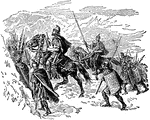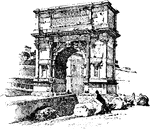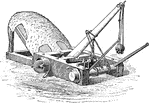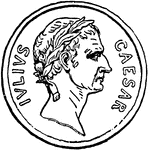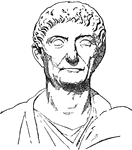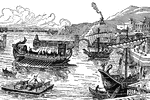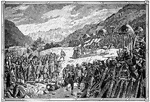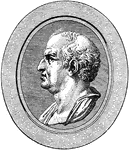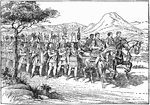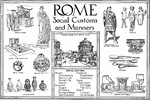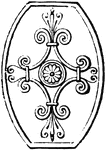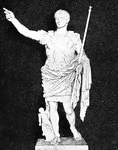
Augustus
"Augustus ruled for about forty-two yeras, that is, from 27 B.C. to 14 A.D., and this period is known…

Eagle Bearer
An eagle bearer from the Roman Empire. The eagle was made of precious metal and was the symbol of the…
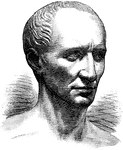
Julius Caesar
An image depicting Julius Caesar, a Roman general and statesman. He was a key component to the shift…

A Catapult
A catapult as used during the Roman Empire. The catapult is an effective device used to hurl an object…
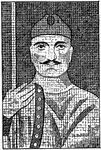
Charlemagne
The King of the Franks from 768 and the Emperor of the Romans from 800 until his death in 814.

Constantine the Great
Emperor of Rome from 306 to 337. He is best known for being the first Christian Roman emperor.

Consul and Lictors
The consul was the highest elected office of the Roman Republic. They were elected every year. The lictors…

Column of Duilius
Restoration of the column of Gaius Duilius, a Roman politician and admiral in the First Punic War.
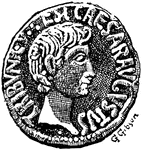
Dupondius, Obverse
The obverse side of the dupondius, "a Roman bronze coin, of the value of 2 asses." -Whitney, 1911
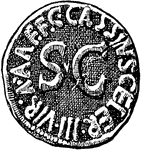
Dupondius, Revers
The reverse side of the dupondius, "a Roman bronze coin, of the value of 2 asses." -Whitney, 1911
Fasces of a Roman Magistrate
"In Rom. antiq., bundles of rods, usually of birch, with an ax bound in with them, the blade projecting,…

Lictors with Fasces
"The symbolic fasces borne by these officers were probably of Ertuscan origin. The Tarquins are said…

Gallic Remains
"1 and 3, necklaces with amber and coral pendants; 2, military standard; 4, bronze trumpet; 5, iron…

Gallic Soldier Wearing Trousers and a Horned Helmet
A soldier from Gaul carrying a sword in his right hand and shield in his left. He is wearing a cloak…
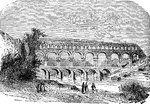
Pont du Gard
The Pont du Gard is an aqueduct and bridge that was built over the Gard River by the Roman Empire. It…

Pompey the Great
Also known as Gnaeus Pompeius Magnus. He was a military and political leader of the late Roman Republic.
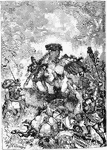
Death of Julian the Apostate
A depiction of Julian the Apostate, a noted philosopher and Roman Emperor, and his death.
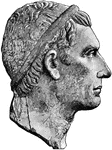
Bust of Julius Caesar
Gaius Julius Caesar was a Roman military and political leader. He played a critical role in the transformation…
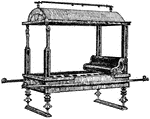
A Roman Litter
"The litter consists of an ordinary couch with four posts and a pair of posts. Curtains fastened to…
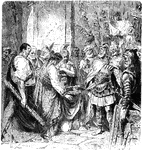
Odoacer Compels Augustulus to Yield the Crown
Augustulus is deposed from the crown by Odoacer, and was thus the last Western Roman Emperor.
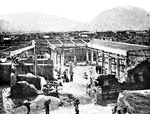
Pompeii
"Excavating a house at Pompeii from eruption of Vesuvius, which buried the cities of Herculaneum and…

Pompey
Also known as Gnaeus Pompeius Magnus. He was a military and political leader of the Roman Republic.

A Roman Aqueduct
"The Pont du Gard near Nimes (ancient Nemausus) in southern France. Built by the emperor Antoninus Pius.…

Roman Boy
"The two chief avenues that were open to advancement were the political and the military. He must be…
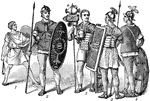
Roman Soldiers and Equipment
"1, funditor; 2, 2, milites levis armaturae; 3, 3, legionarii; 4, sarcina."—D'ooge & Eastman,…

Roman Standards
Staffs carried by Roman legions to show who they were and what rank in the army they held.

A Roman Temple
"The best preserved of Roman temples. Located at Nimes in southern France, where it is known as La Maison…

Castra Romana
"A, via principalis. B, via documana. C, porta praetoria. D, porta decumana. E, portq principalis dextra.…

The Wall of Rome
"Constructed by Aurelian and rebuilt by Honorius. The material is concrete faced with brick; thickness,…
